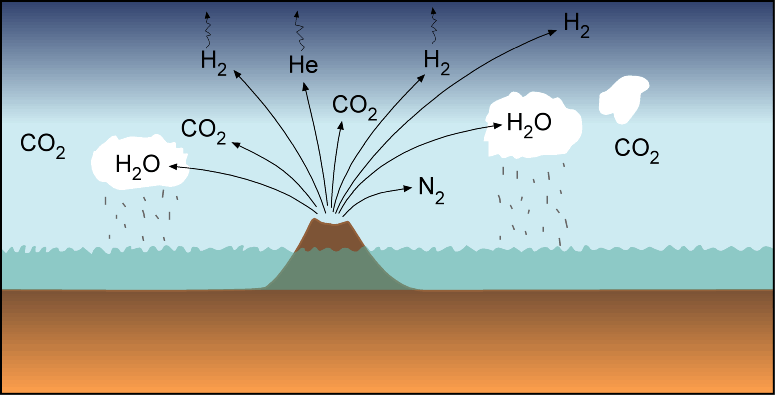The Earth's early atmosphere would have consisted of light volatile (low boiling point) gases contained in the meteorites and other bodies that were colliding with Earth. These would have escaped into space. Gases such as hydrogen and helium, bromine and iodine would have been lost very early on.

As the crust formed on the earth and began to stabilise (around 3.8 billion years ago), volcanoes would have been the major contributor of the atmosphere. This process is called outgassing. Analysis of volcanoes today give us a clue to what may have been in the Earths "2nd atmosphere". One point to note is the absence of oxygen.

With the rise of the stromatolites and removal of iron from the oceans, oxygen began to accumulate in the atmosphere. Since they began photosynthesis, the amount of CO2 also fell from the atmosphere.

The combine efforts of stromatoloites and the other photosynthetic organisms that followed lead to the composition of the atmosphere that we have today. These levels are pretty typical of the planet for the last 450 million years.

No comments:
Post a Comment